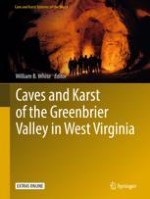2018 | OriginalPaper | Buchkapitel
18. Terrestrial Fauna in the Greenbrier Karst
verfasst von : David C. Culver, Daniel W. Fong
Erschienen in: Caves and Karst of the Greenbrier Valley in West Virginia
Aktivieren Sie unsere intelligente Suche, um passende Fachinhalte oder Patente zu finden.
Wählen Sie Textabschnitte aus um mit Künstlicher Intelligenz passenden Patente zu finden. powered by
Markieren Sie Textabschnitte, um KI-gestützt weitere passende Inhalte zu finden. powered by
